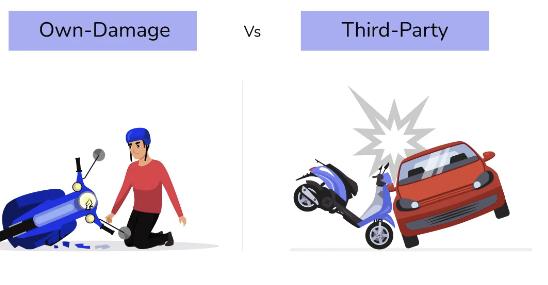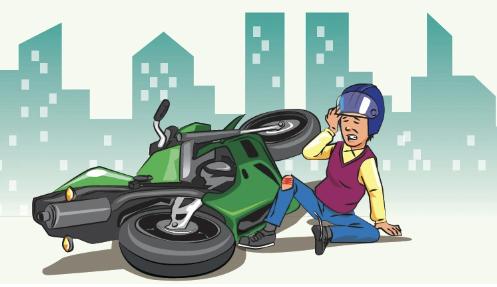If you’re new to the world of car insurance, the terminology can be confusing. From collision coverage to liability, there are a lot of terms that insurers use to describe their product offerings.
In this blog post, we will define some of the most important terms related to car insurance policy so that you can make an informed decision when purchasing a policy.
Third-party liability
Third-party liability is the legal responsibility of an individual or organization to pay for the damages and losses caused to another party.
This type of insurance is typically required by law in many jurisdictions, and it can protect you from having to pay for the other party’s damages or losses out of your own pocket.
Comprehensive coverage
Comprehensive coverage is one of the most important types of car insurance coverage you can have. This type of coverage will protect you from damages caused by events that are out of your control, such as weather damage, theft, and vandalism.
Without comprehensive coverage, you would be responsible for paying for all repairs and replacements out of your own pocket.
While comprehensive coverage is not required in all states, it is always a good idea to have this type of protection in place. If you are financing your vehicle, your lender will likely require you to carry comprehensive coverage. Even if it is not required, we highly recommend that all drivers purchase comprehensive insurance.
Insured Declared Value
The Insured Declared Value (IDV) of a vehicle is the maximum amount that an insurance company will pay out in the event of a total loss. It is calculated by taking into account the age, make, model, and condition of the vehicle.
The IDV is an important factor in determining your car insurance premium. A higher IDV will result in a higher premium, as there is more to lose in the event of a total loss. Conversely, a lower IDV will result in a lower premium.
It is important to note that the IDV is not always equal to the market value of your vehicle. In some cases, it may be less than the market value. This is because the IDV takes into account things like depreciation and wear and tear.
Some insurers offer cover for vehicles with an agreed value, which means that you and the insurer agree on a set amount that will be paid out in the event of a total loss. This can be useful if you have a particularly valuable or rare vehicle.
No Claim Bonus
If you haven’t filed a claim on your car insurance policy, you may be eligible for a no-claim bonus (NCB). This is a discount that can be applied to your premium, making it cheaper.
The amount of the discount depends on how long you’ve been insured without making a claim. For example, you may get a 30% NCB if you haven’t made a claim in five years.
Car insurance premium
When it comes to car insurance, the premium is the amount of money that you pay on a monthly or annual basis. This is typically based on factors such as your driving record, the type of vehicle that you drive, and your age.
If you have a clean driving record and drive a safe vehicle, you can expect to pay a lower premium than someone with a poor driving record who drives a high-risk vehicle.
Personal accident cover
Assuming you’re referring to the term “personal accident cover” as it relates to car insurance:
Personal accident cover is a type of insurance that provides financial protection in the event that you are involved in a car accident. This coverage can help to cover medical expenses, lost wages, and other costs associated with an accident.
Cashless garages
Most insurance companies now offer cashless garages, which allow you to get your car repaired without having to pay upfront.
All you need to do is give your insurance company a call, and they will direct you to a participating garage. Once your repairs are completed, the garage will send the bill directly to your insurer.
Add-on covers
There are a variety of add-on covers that can be added to a car insurance policy to provide additional protection. Some of the most common add-on covers include:
- Windscreen cover: this cover protects you from having to pay for repairs or replacement of your windscreen, side windows or sunroof if they are damaged in an accident or by a flying object such as a stone.
- Courtesy car cover: this cover provides you with a courtesy car while your own car is being repaired following an accident.
- Personal belongings cover: this cover protects your personal belongings (e.g. clothes, bags, laptop) if they are stolen from your car or damaged in an accident.
Conclusion
There are a lot of important car insurance terms that you should know about before you purchase a policy. By understanding the meanings of common terms like “deductible” and “liability,” you’ll be better equipped to find the right policy for your needs. And if you have any questions, don’t hesitate to ask your agent or broker for clarification. With a little research, you can find the perfect car insurance policy for your needs.




[…] is one of the best places to start if you want to learn more about how the money from your life insurance policy will be used. Throughout this article, we will examine some of the biggest factors that insurance […]
[…] which is great news for all drivers. Even if you don’t think you are at fault, you must tell your auto insurance company about the accident. Your insurance might pay for your medical bills and car repairs, but how […]